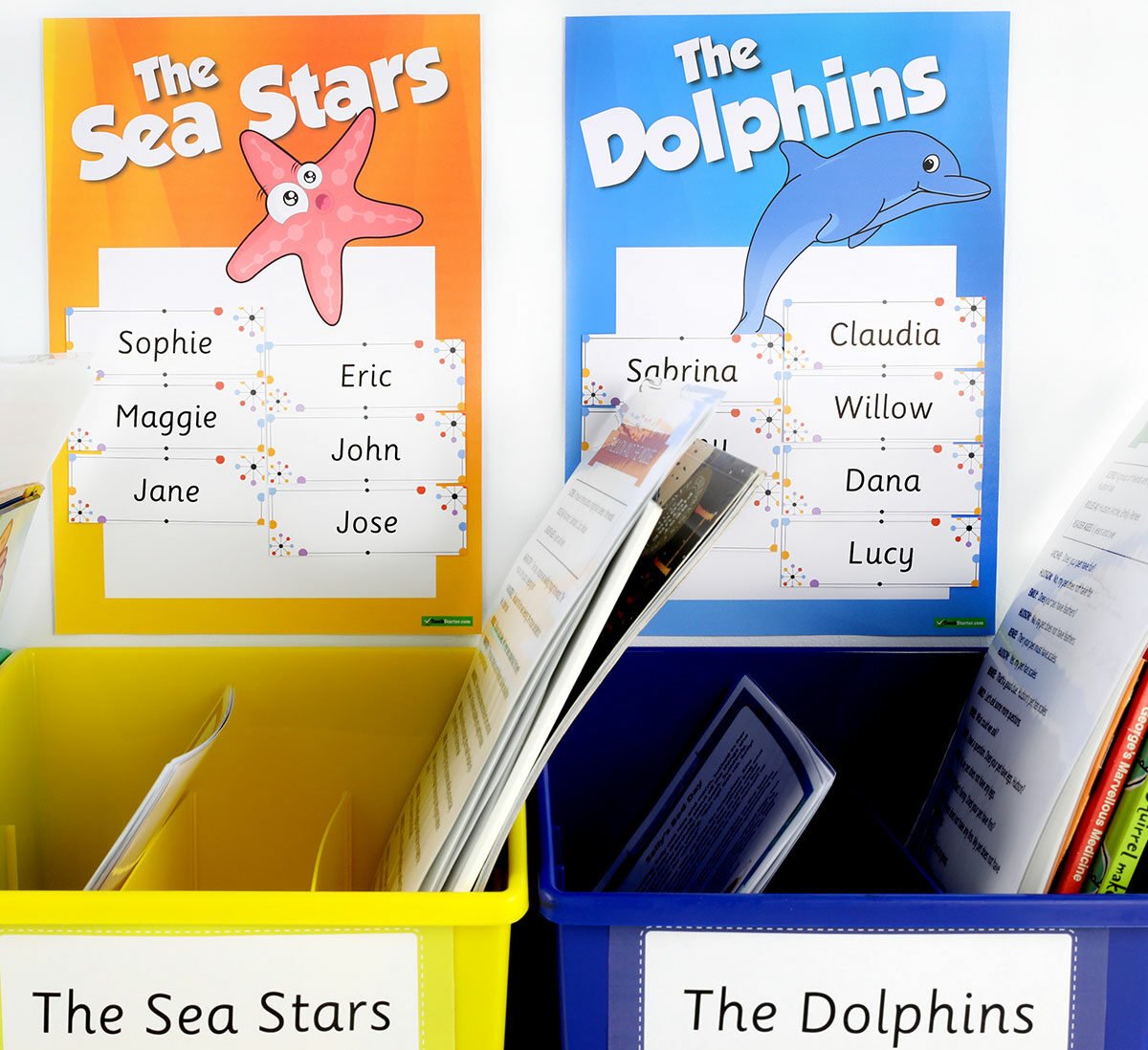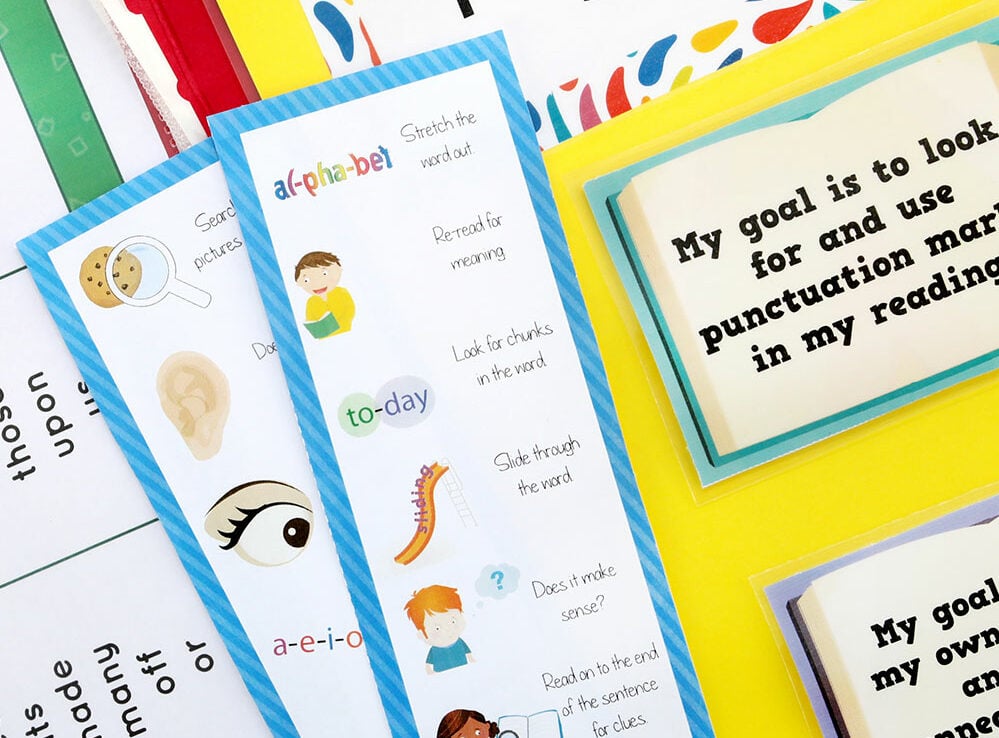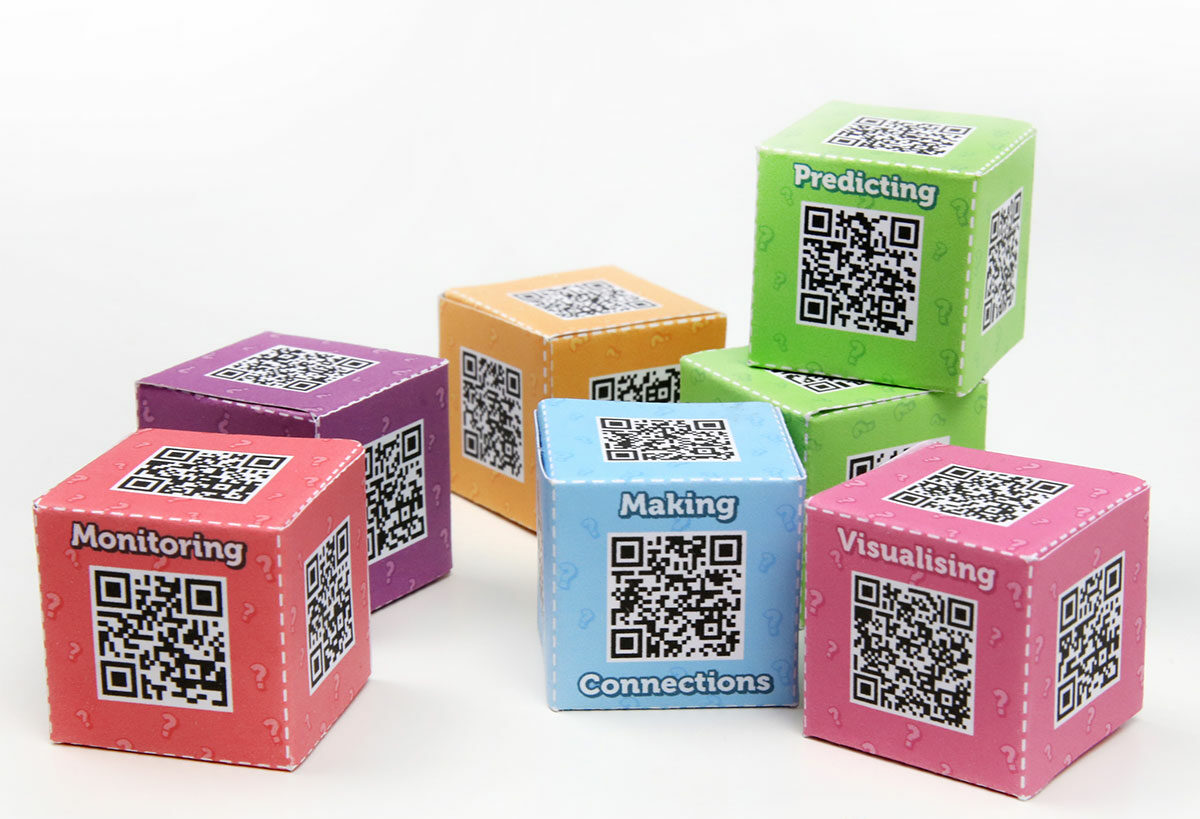The way we teach reading has changed over the years from an emphasis on phonics-based learning to the whole word approach, from using sight words to the Orton-Gillingham approach. But one instructional method that has gained and maintained popularity in classrooms around the US is guided reading — sometimes called the Fountas & Pinnell approach to early literacy.
Looking to set up guided reading groups in your classroom or looking for new guided reading activities? Here’s what you’ll need to know!
What Is Guided Reading?
The guided reading approach to early literacy is a method that involves teaching small groups of students with similar reading abilities. It was first developed in the 1960s by a New Zealand educator named Mary Clay. It was further developed and popularized here in the US by Irene C. Fountas and Gay Su Pinnell, education professors who wrote the seminal text on the topic: Guided Reading: Good First Teaching for All Children.
Teachers who use guided reading groups gather kids of similar reading abilities together — usually creating groups of no more than six students. The goal is to create small groups that the teacher can then work with directly, rather than teaching a whole class of 20-plus kids whose abilities may vary drastically.
Guided reading works off a leveling system for books that labels them from A to Z with A being the easiest and Z the hardest. A list of more than 50,000 of those leveled books is available from the Fountas and Pinnell website.
Choosing texts that are at a level that’s at or just slightly above the reading levels of the students in the group, teachers will introduce the text to their guided reading group to help the students develop a contextual framework. That can mean anything from going over illustrations to discussing headings, to encouraging the kids to predict what they think will happen. Students are nurtured with the small group approached and challenged to problem-solve in the guided reading process.
How to Set Up Guided Reading
The setup and grouping of your students are crucial elements of a successful guided reading lesson.
Guided reading tubs
Once you have done your assessments and decided which students will go in each guided reading group, you’ll want to set up your organization systems.
These brightly colored tubs from Amazon are the perfect storage solution for storing the texts and associated guided reading activities for the week. We used a set of Aquatic Animals Grouping Posters, mainly because they are bright and go nicely with the colors on the tubs (a suggestion from one truly color-obsessed teacher to another!). We also used the Sparkles name tags for the names and the Rainbow Word Wall template for the names of the groups on the front of the tubs as well. This makes it very clear to the students which group they are in and also makes it easier for helpers in the classroom.
Teach Starter Teacher Tip: Because guided reading groups are based on similar reading levels, you may find some students change groups over time — using velcro dots will make it easy to move students’ names around as they change groups.

Guided reading folders
We also recommend providing each student with their own guided reading folder. In the folder, you’ll want to include each child’s individual reading and comprehension goals that they are working towards at the time. Again, we suggest using velcro dots for these to make it easy to change the goals once a student had achieved them.
- In each student’s folder, we suggest including a sight word mat, which can be kept in a plastic sleeve and stapled to the other side of the manilla folder.
- Having a reading strategies bookmark in each folder is also an essential tool in supporting students during their guided reading lessons. Making the bookmark available for the students to refer to during guided reading encourages independence and helps limit interruptions while you are working with an individual child.
These resources can be extremely helpful for setting up your guided reading tubs and folders:
[resource:1640234][resource:150051][resource:1630778]
Alternatives to Round Robin Reading
Here are some different ways that you can listen to the children read aloud in a small group without falling into the trap of always having your guided reading groups reading round-robin style.
Readers’ Theater
Although students are encouraged to read aloud in this guided reading activity, studies have proven that this interactive learning experience can improve oral reading fluency in students of all reading abilities.
Silent Reading
Students sit in their guided reading groups, however, they are given the opportunity to read silently in their head. If they find this difficult, encourage them to whisper the story quietly to themselves or use a whisper phone. As a teacher, I would then tap them on the shoulder when I was ready to listen to them read. If a student is reading silently when you get to them, ask them to whisper from the point they’ve reached in the text.
Planning a Guided Reading Session
When I was a teacher, I would spend a small amount of time talking about the text, pictures, and predictions, as well as getting students to look at and remember the reading goals they are currently working towards.
Then, I would get the students straight into their silent reading, reminding them to use the reading strategies bookmark and sight word mat to assist them if they got stuck.
It is important that you do not interrupt students, even if you can see that they are struggling. Instead, encourage them to use their reading strategies.
When you can see that a student does need a bit of extra help, ask questions like:
- What do you think you can do next?
- What strategy are you going to use next to keep reading?
Otherwise, if you assist them every time, they are not going to learn to work out tricky words by themselves.
Finally, after the reading of the text, I would check for comprehension and ask questions about what reading strategies they used during their reading.
Guided Reading Activities
We have a number of guided reading activities, guided reading question prompts, and resources that you may find useful in your classroom.
Which you choose to use really depends on your individual preference. You will also need to consider the level of your students when thinking about what to focus on in each of the guided reading sessions.
For help setting up your guided reading, take a look through our extensive library of guided reading resources.
Do you have any favorite tips or tricks for making guided reading work in your classroom? Let us know in the comments below!
Banner image via shutterstock/monkey business images









Comments